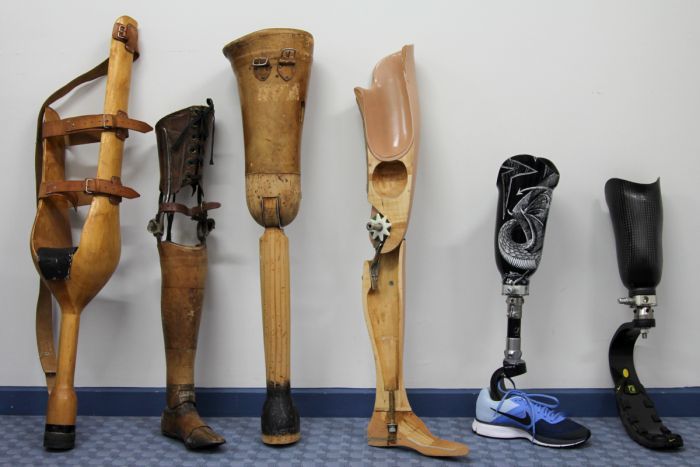Advancements of Prosthetic Limbs
April 2, 2020
From wooden arms and legs starting in the 16th century to nerve linking prosthetic arms, legs, and hands of the 20th century, artificial limbs have come a long way. The definition of a prosthetic or prosthesis is an artificial limb that is made to replace a missing body part. The most common reasons for getting prosthetic limbs are because of vascular disease, diabetes, and peripheral arterial disease. All of these diseases can cause you to lose limbs. So scientists created prosthetic limbs as replacements. The first prosthetic was created in the early 16th century by a doctor named Ambroise Paré. He introduced a hinged prosthetic hand, and a leg with a locking knee joint.
Those prosthetics were made of available materials such as wood,metal, and leather. Over time prosthetics have become much more advanced and more intricate than ever before. In 2020 the advancements of prosthetics are close to what you would see in some futuristic movie. An experimental prosthetic arm that uses virtual nerve signals to essentially let the amputee feel the virtual nerves in the prosthetic arm, you will be able to have full wrist function, finger joints, and full forearm movement. It’s still quite new and though it will give you full movement its still quite slow in its pacing, but soon enough it will become a lot faster.
You can 3D print a prosthetic to as little as 50 dollars, though it likely won’t be as advanced as the prosthetic I spoke of earlier, those run at a high price for a fully functional nerve linked arm of 10,000 dollars for one. Eventually the prices will be lowered once they can figure out how to make these arms at a much faster rate than they are currently made.Typical prosthetics are made with carbon fiber covered in plastic, along with foam padding (for comfort) or flesh colored padding.
Blade legs are used for athletes such as runners, those are made of 80 hair thin layers of carbon fiber that are able to store kinetic energy like a spring which helps the runner indefinitely.
I wanted to see how much people knew about how advanced prosthetic limbs had become, so I asked some students from pitman high school what they knew. The first student I asked is Ismael Garcia. “Yeah I only know that they have the plastic wood looking ones that attach to your arm and leg.” My next interview was with Levy Camacho. “I know they have the nerve sensing ones that you can feel the movement in the hand and stuff.”
The advancements of prosthetics are growing ever more and are becoming more powerful and intricate as time goes on. If you are missing a limb and don’t have a prosthetic I encourage you to look into them for it is quite intriguing how many features they have.
